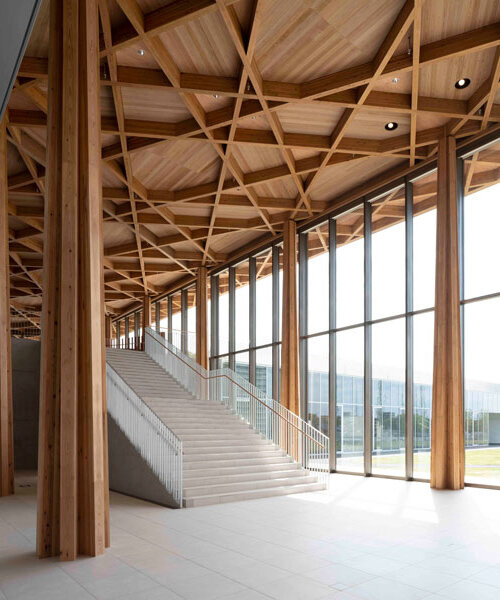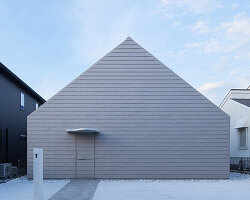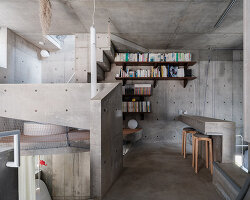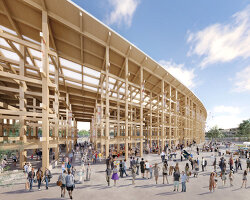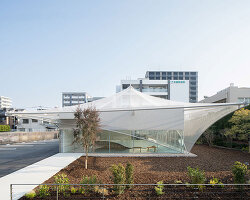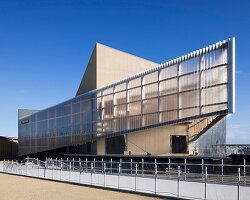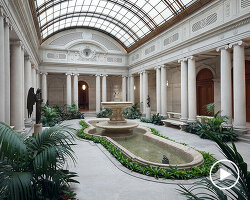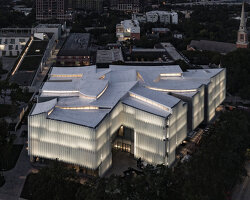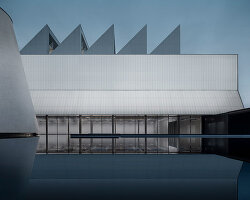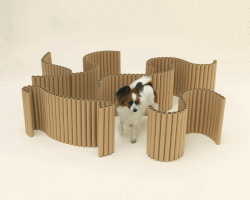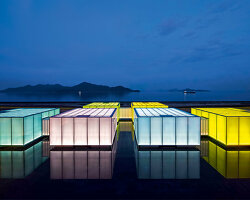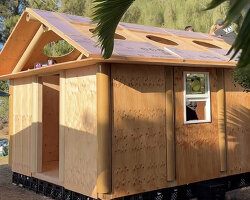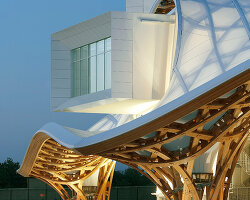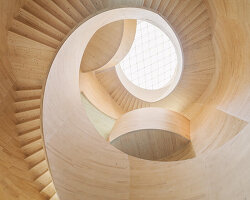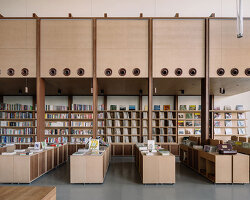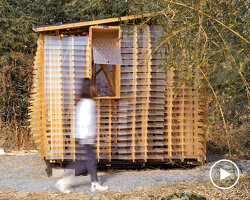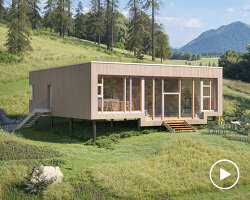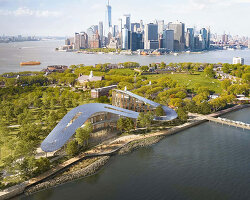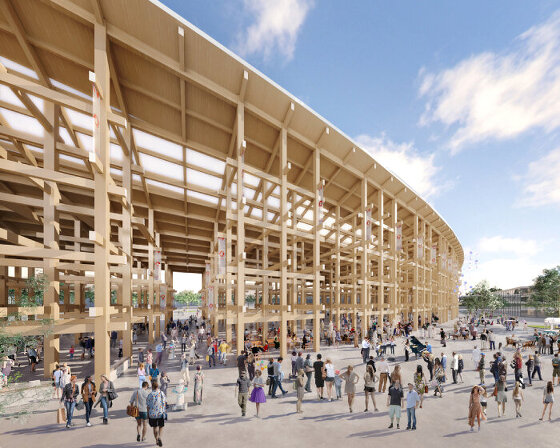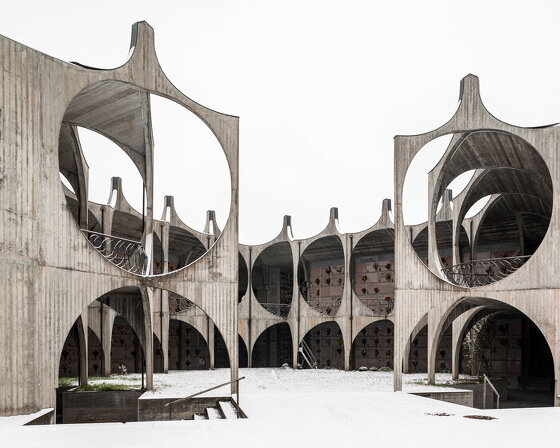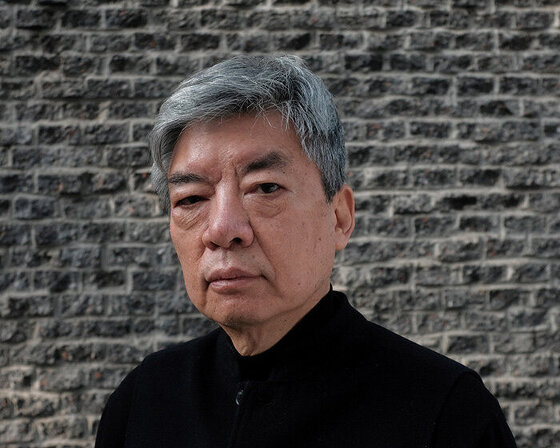A Connected Cultural Landscape in toyota city
The newly expanded Toyota City Museum, designed by Shigeru Ban Architects, has opened in the heart of Toyota City, Japan. Strategically placed on the east side of its site, adjacent to the existing museum, this latest timber addition creates a unified museum zone with the neighboring facility. The western side of the grounds is designed as a shared landscape, linking the Toyota City Museum and the Toyota City Art Museum to form an accessible, integrated cultural site.
Toyota City Museum is designed to connect with the Toyota City Art Museum, situated five meters above ground level, by incorporating an ‘interstitial space.’ This free zone physically bridges the two sites and fosters a sense of continuity between them. The space serves as a transitional point, enhancing accessibility and making both buildings feel part of a cohesive museum zone.
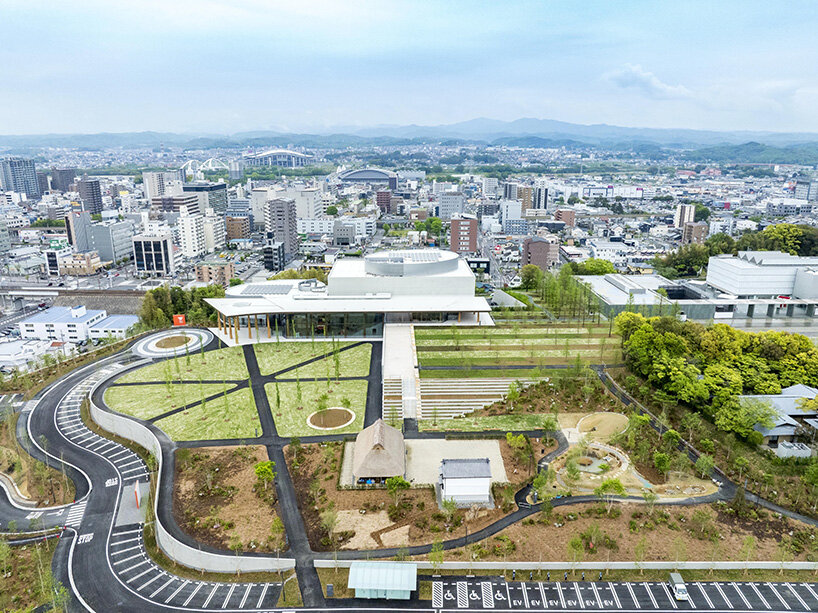
images © Hiroyuki Hirai
sustainable design by shigeru ban architects
With its Toyota City Museum, the architects led by Shigeru Ban bring sustainable building practices to the forefront, emphasizing environmental stewardship as a central design principle. One-fifth of the museum’s area consists of the interstitial space, which is built from locally sourced Toyota cedar wood to minimize CO2 emissions. This eco-conscious approach made the museum Japan’s first to achieve ZEB (Net Zero Energy Building) Ready certification, positioning it as a leader in sustainable public architecture.
In addition to its environmental initiatives, the museum is designed to be resilient. It can be converted into a disaster response center, providing a safe location for emergency operations during natural calamities. This multi-functional aspect ensures the museum serves both cultural and practical community needs, underscoring its role as a facility that supports its city in all circumstances.
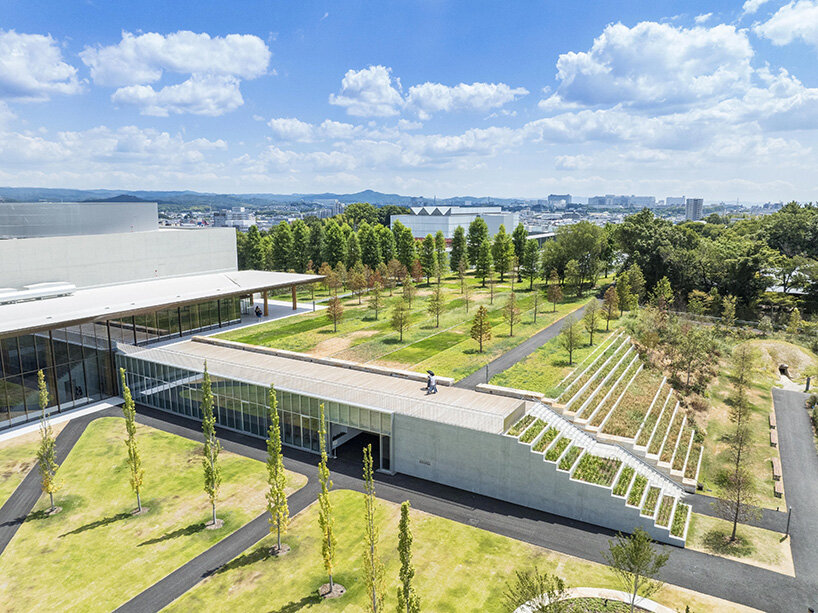
Shigeru Ban Architects’s addition connects with the existing Toyota City Art Museum
a museum Inspired by Cultural Symbols
The museum’s design by Shigeru Ban Architects draws inspiration from Toyota City’s emblem, integrating symbolic elements into its architectural features. The roof features a skylight that casts an emblem-like shadow during the summer solstice, providing a visual connection to the city’s identity. A prominent 90-meter (295-foot)-long glazed wooden structure, known as the ‘En-nichi’ area, serves as the museum’s heart and is designed for exhibitions, gatherings, and community events, creating a flexible space for public engagement.
Originally separated by a row of evergreen white oaks, the site of the Toyota City Museum — once Toyota Higashi High School — was initially designed as an independent plot. Shigeru Ban Architects seized the opportunity to integrate the new museum with the Toyota City Art Museum, creating a single, expansive museum zone. The Toyota City Museum’s structure echoes the Art Museum’s proportions and facade, fostering a dialogue between the two sites that enhances the cultural experience for visitors.
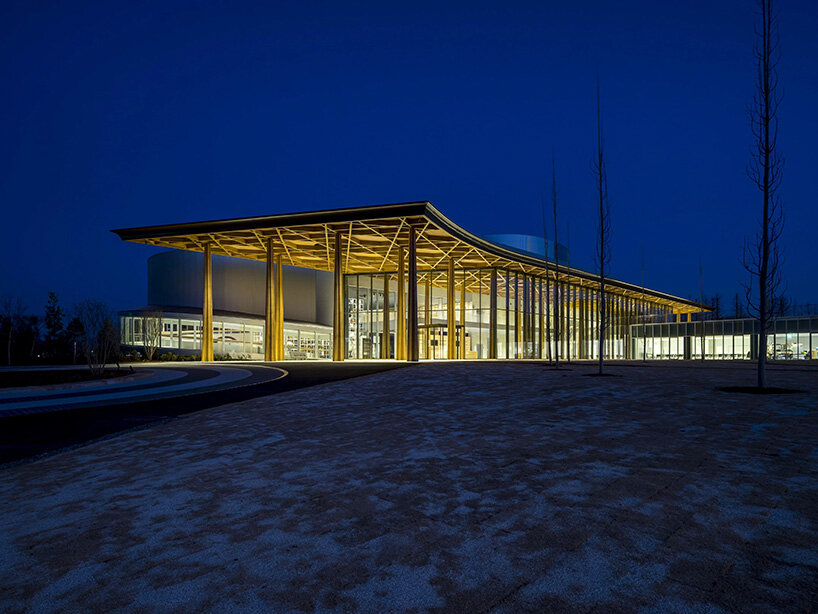
the museum’s western side features a continuous landscape that merges with the surrounding grounds
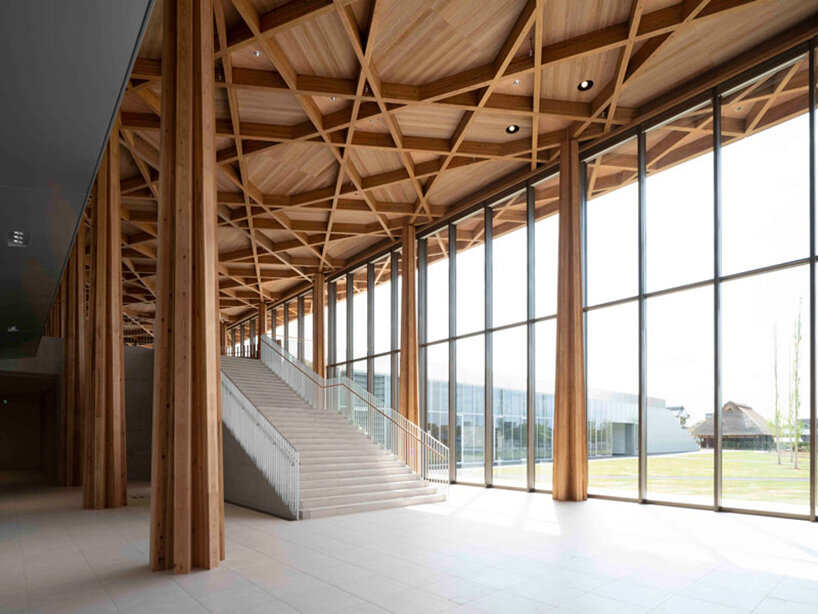
an interstitial space links the two museum levels, improving accessibility and visitor flow
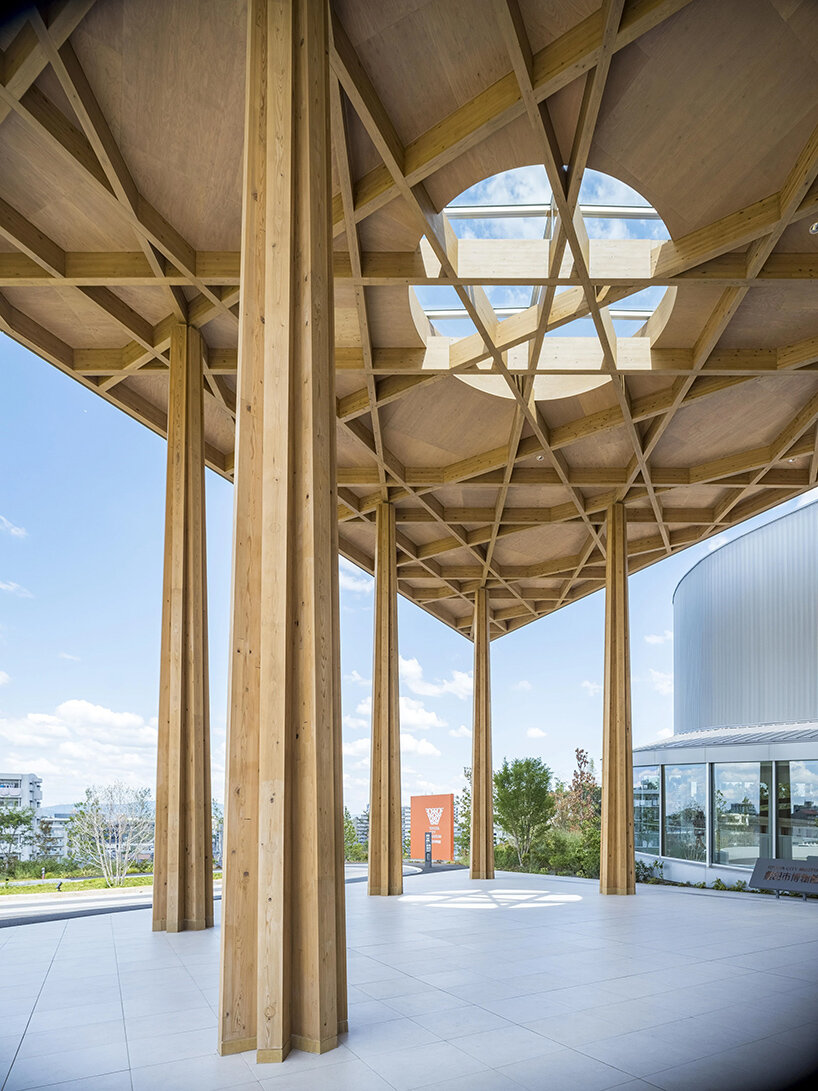
locally sourced cedar wood is used to reduce CO2 emissions during construction
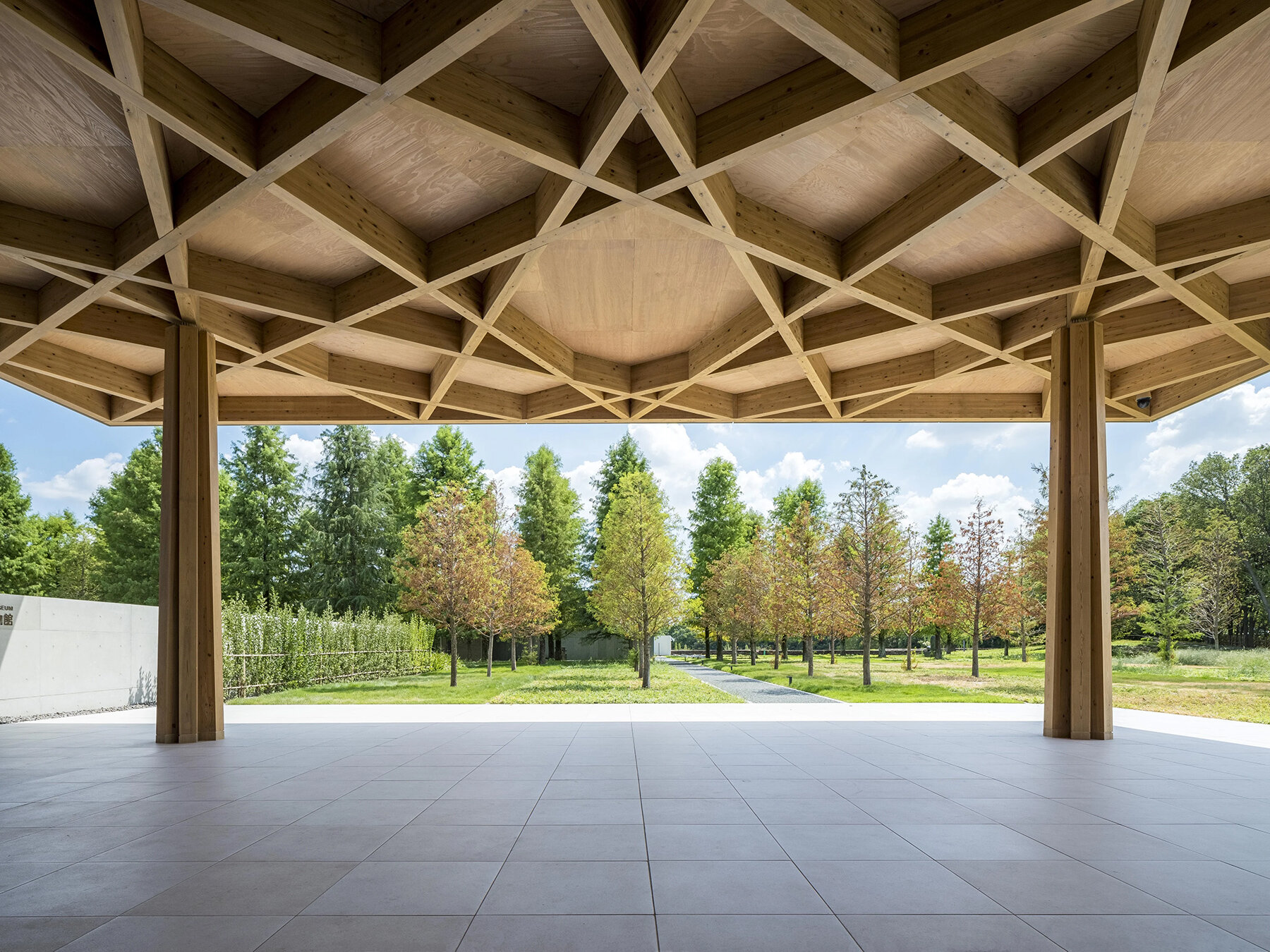
the toyota city museum is Japan’s first museum to receive Net Zero Energy Building (ZEB) Certification
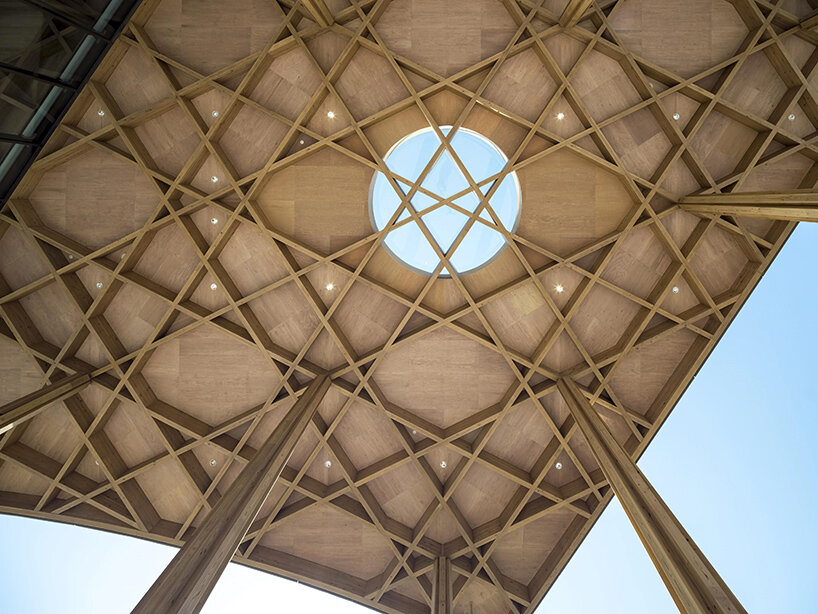
the roof’s skylight casts a city emblem shadow during summer solstice, symbolizing Toyota City’s identity
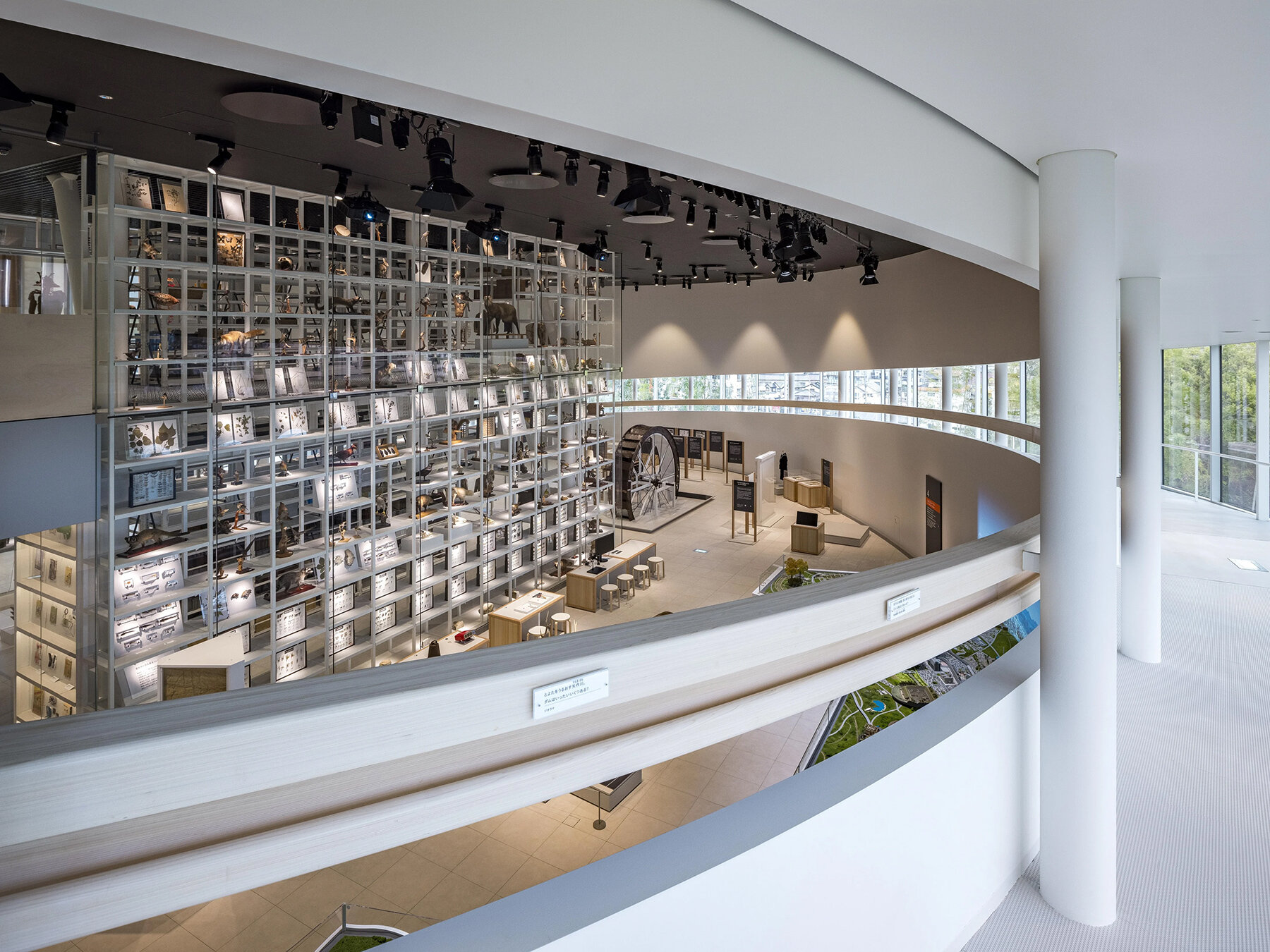
a multifunctional open space, known as ‘en-nichi,’ supports exhibitions, community gatherings, and events
project info:
name: Toyota City Museum
architect: Shigeru Ban Architects | @shigeruban
location: Toyota City, Japan
completion: 2024
photography: © Hiroyuki Hirai
